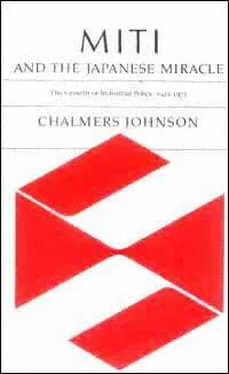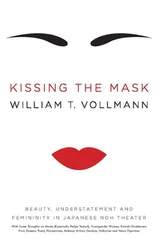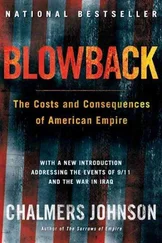Chalmers Johnson - MITI and the Japanese miracle
Здесь есть возможность читать онлайн «Chalmers Johnson - MITI and the Japanese miracle» весь текст электронной книги совершенно бесплатно (целиком полную версию без сокращений). В некоторых случаях можно слушать аудио, скачать через торрент в формате fb2 и присутствует краткое содержание. Год выпуска: 2007, Издательство: Stanford University Press, Жанр: Старинная литература, на английском языке. Описание произведения, (предисловие) а так же отзывы посетителей доступны на портале библиотеки ЛибКат.
- Название:MITI and the Japanese miracle
- Автор:
- Издательство:Stanford University Press
- Жанр:
- Год:2007
- ISBN:нет данных
- Рейтинг книги:3 / 5. Голосов: 1
-
Избранное:Добавить в избранное
- Отзывы:
-
Ваша оценка:
- 60
- 1
- 2
- 3
- 4
- 5
MITI and the Japanese miracle: краткое содержание, описание и аннотация
Предлагаем к чтению аннотацию, описание, краткое содержание или предисловие (зависит от того, что написал сам автор книги «MITI and the Japanese miracle»). Если вы не нашли необходимую информацию о книге — напишите в комментариях, мы постараемся отыскать её.
MITI and the Japanese miracle — читать онлайн бесплатно полную книгу (весь текст) целиком
Ниже представлен текст книги, разбитый по страницам. Система сохранения места последней прочитанной страницы, позволяет с удобством читать онлайн бесплатно книгу «MITI and the Japanese miracle», без необходимости каждый раз заново искать на чём Вы остановились. Поставьте закладку, и сможете в любой момент перейти на страницу, на которой закончили чтение.
Интервал:
Закладка:
56
One of the most important among those arrested, Inaba Hidezo* (then working in the materials mobilization planning unit), has two theories: the first is that the army on its own wanted to get rid of officials in the CPB who were accurately if pessimistically reporting to the cabinet that Japan
Page 152
did not have the material means to wage war successfully against Great Britain and the United States; and the second is that the incident was a rather unimportant purge of mildly Marxist bureaucrats by the Thought Police.
57
The most widely held opinion is that Kobayashi was rightthere were reds in the Cabinet Planning Board. This view is based on the list of those arrested and their postwar careers. The list includes Wada Hiroo, a postwar left socialist and the subject of an uproar in 1946 when Yoshida named him agriculture minister; Sata Tadataka, a left socialist and leader of the Economic Stabilization Board under the Katayama government in 1947; Katsumata Seiichi, a Socialist Party Diet member and leading theorist of the left socialist faction; and Masaki Chifuyu, a postwar socialist mayor of Kamakura. Many of these men had entered the Cabinet Research Board (and, from there, the CPB) through backgrounds in agricultural administration or, at least in Inaba's case, as staff members of the old Harmony Society (Kyocho* Kai), an organization set up in 1919 after the rice riots by the Industrial Club to promote cooperation and friendly relations between labor and management.
58
As Inaba says, most of them were not communists but "humanists" attracted to vaguely socialist programs. Nonetheless, they were definitely to the left of most reform bureaucrats.
Kobayashi himself became a casualty of the Cabinet Planning Board incident. During early 1941 CPB elements tried to get even with him by attacking his personal fortune and accusing him of income tax evasion. In order to try to end the whole affair, Konoe and Home Minister Hiranuma, who represented a kind of conservatism that was lukewarm about national socialism, arranged for a balanced purge: on April 4, 1941, both MCI Minister Kobayashi and CPB President Hoshino were forced to resign. Given the problems they had encountered, Konoe and Hiranuma decided that they had better look for military officers as replacements. Lieutenant General Suzuki Teiichi became president of the CPB and headed it for the rest of its existence. Looking for a similar type to head MCI, Konoe first chose Admiral Toyoda Teijiro*, a former vice-minister of the navy and son-in-law of a Mitsubishi director. However, Toyoda shortly left, first to become foreign minister and then to be president of Japan Steel (he returned as minister of munitions under the Suzuki cabinet at the end of the war). Konoe therefore selected another admiral, Sakonji Seizo*, a former chief of naval staff and the head of the North Sakhalin Petroleum Company (a Mitsui affiliate), and he headed MCI until the Tojo* government was established.
Page 153
The stand-off over policy between the government and the business community still had to be resolved. MCI therefore came up with a compromise that retained many CPB ideas but that more than met the business community's objections. Instead of going to the Diet with a new law, as the CPB wanted to do, MCI proposed amending the mobilization law and then implementing industrial control through Imperial ordinances. This would avoid any further public debate on the subject. The result was the Important Industries Association Ordinance (Juyo * Sangyo* Dantai Rei, Imperial ordinance 831 of August 30, 1941). It created control organs for each industry but assigned the management functions originally sought by the bureaucrats to civilian industrial leaders. All enterprises in an industry became members of a "control association" (
toseikai
*), which was a special legal entity comparable to a government-authorized cartel; control associations were empowered to allocate materials, set production targets, and distribute products of the member firms. This approach was very similar to Yoshino's in the Important Industries Control Law of 1931. Business had won a major point: the president of each control association was invariably the chief executive officer of the largest enterprise in an industry, and as a result the control associations were utterly dominated by the zaibatsu.
59
As relations with the United States deteriorated, the throne in October 1941 turned to General Tojo* and asked him to form a government. He chose as minister of commerce and industry his colleague and friend from Manchurian days, Kishi; and Kishi in turn cleansed his old ministry of people who had not supported him against Kobayashi. Kishi also appointed Shiina as vice-minister. Some of the strains within the ministry were revealed by a unique event. Higashi Eiji, the first head of the General Affairs Bureau in 1939 and director of the Fuel Bureau when the Tojo cabinet was installed, resigned in protest. According to Shiroyama, Higashi sought to protest the recklessness of the movement toward war; as the official responsible for the supply of petroleum, he knew that the war would inevitably be lost.
60
Although the "control bureaucrats" finally came to power, they did not change Japanese industrial policy significantly. They were always hampered by the structure of industrial control that they had inherited. As T. A. Bisson noted from the perspective of 1945, during the Pacific War Japan operated essentially a private enterprise economy with surprisingly little governmental interference.
61
One result is pointed out by Mark Peattie: "The myriad of controls, under which
Page 154
Japan fought first the China War and then the Pacific War, provided no overall coordination, but rather left the prosecution of these conflicts scattered among various and competing agencies. At the same time, Japan's economy, subjected to conflicting pressures from business and military leadership, remained partly free and partly controlled. Such a system could hardly be called totalitarian and in any event was ultimately disastrous for Japan's war effort."
62
There were two major ironies in this situation. First, despite Tojo's* and Kishi's best efforts to achieve state economic control while they were in office, state control was actually realized in Japan only under the Allied occupation, when SCAP in effect transferred the powers of the control associations to the government. Second, although the prewar and wartime system of divided control
was
disastrous for Japan's war effort, when a similar pattern reemerged after the occupation, it proved optimal for Japan's peaceful industrial expansion. The 1930's and the war had demonstrated to all who were involved with postwar industrial policy that neither state control nor self-control alone was adequate to achieve cooperation and coordination. What was needed was an amalgam of the two.
As we have noted earlier, the most striking structural characteristic of the capitalist developmental state is an implicit political division of labor between the tasks of ruling and the tasks of reigning. The politicians reign and the bureaucrats rule. This should not be thought of as a cynical comment on modern government or a counsel of despair concerning the realities of democracy. Both sides have important functions to perform. The politicians provide the space for bureaucrats to rule by holding off special interest claimants who might deflect the state from its main developmental priorities, and they legitimate and ratify the decisions taken by bureaucrats. The bureaucrats in turn formulate developmental policies, draft and administer the laws needed to implement the policies, and make midcourse adjustments as problems arise. This general pattern of the democratic developmental state, which we shall consider further in Chapter 9, did not really appear in Japan until after the creation of the Liberal Democratic Party in 1955. But the 1930's were important to its creation both in fostering the rise of the economic bureaucracyor the "economic general staff" to name its true functionand in revealing that although it could and did rule, it could not reign.
Читать дальшеИнтервал:
Закладка:
Похожие книги на «MITI and the Japanese miracle»
Представляем Вашему вниманию похожие книги на «MITI and the Japanese miracle» списком для выбора. Мы отобрали схожую по названию и смыслу литературу в надежде предоставить читателям больше вариантов отыскать новые, интересные, ещё непрочитанные произведения.
Обсуждение, отзывы о книге «MITI and the Japanese miracle» и просто собственные мнения читателей. Оставьте ваши комментарии, напишите, что Вы думаете о произведении, его смысле или главных героях. Укажите что конкретно понравилось, а что нет, и почему Вы так считаете.












